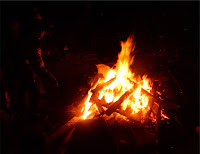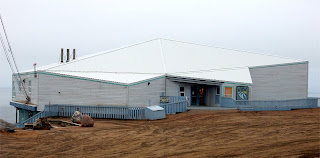It’s the end of October and I still
haven’t done any extreme ironing this year.
I had wanted to iron outside somewhere in April but other things got in
the way. I had a backup plan for the
early fall but that didn’t materialize either.
I suppose I could extreme iron by myself but then it would be difficult
to convince people that I did do it without proof of some kind. It’s why I hired support teams for my
previous outings to take pictures and videos.
There’s still time left in 2019 to pull something off. If not, there’s always 2020.
So far, I’ve extreme ironed five
times; all of which occurred in Arctic Bay.
You can revisit these epic moments of Canadian history here: Part 1,
Part 2, Part 3, Part 4, Part 5. Two days
ago, I was reminiscing about my past extreme ironing adventures and googling images
on the internet. Several of my past
images appear on Google Images but they’re not grouped together. You have scroll down and look around to spot
each individual picture.
I saw one of my old pictures from
2015. I clicked on it to see if the
source URL was my blog. Strangely, it
wasn’t. Instead the link said Sports
Show. I decided to investigate and
clicked the icon. I was taken to an
article titled, “Top 10 Least Popular Sports in the World.” It was written and published by the Sports
Show blog on October 21, 2019. [Update:
the publishing date has been changed for some reason]. The article was written in reverse
chronological order, starting with Number 10 and counting down to Number
1. The text loaded quickly but the
images were taking a bit longer. As I
was slowly going down the list, I began to wonder: is my photo from 2015
featured in this article?
Sports Show placed Extreme Ironing
at Number 3. (I was hoping for Number
1). I quickly read the two short
paragraphs and waited for the feature image to load. Sure enough, after much anticipation, my
picture from 2015 appeared. I didn’t
know about the article nor my picture being chosen. I wasn’t mad.
In fact, I was surprised and grateful.
I’m just a little more famous, I thought. Better enjoy it for the next 15 minutes. I’m glad to be one of the many ambassadors of
Extreme Ironing. Only Sheep Counting and
Ferret Legging are less popular. Thank
You Sports Show for featuring me in your article!
Saturday, October 26 was the day
3045 Army Cadet Corps held its annual Fall Biathlon Competition. Cadets don’t have to be on the Biathlon team
to participate. This event is a friendly
competition between cadets at the corps level.
Participation is voluntary. The
only change we make to the competition is that competitors run instead of ski.
Preparations for the competition began
the week before. I walked the 1km running
course with the cadets so that everyone would be “on the same page”. The first-year cadets especially needed to know
because this was their first time competing.
The course begins & ends at the gym and is square-shaped. Air rifles needed to be checked, scorecards
had to be created, and food rations needed to be brought to the gym. This competition would be an all-day affair
and regulations dictate that the corps needs to provide meals to cadets. Frank recruited several cadets to bring the
Coleman stoves & MREs from his shop to the gym. Thanks Frank!
The final preparations began on the
morning of October 26. Everyone involved
came to the gym at 9:30am to set up. The
three metal plinker targets were positioned at the far end of the gym with
sandbags on top to keep them from moving.
Wooden backboards were placed behind them to prevent any .177 caliber lead
pellets from creating holes in the walls.
Shooting mats, tables, and chairs were lcoated at other end of the gym. Air rifles, pellets, stop watches, spotting
scopes, clipboards, scorecards, and pencils were placed on the various tables. The competition rules and a map of the
running course were taped to walls for reference. Everything was ready to go at 10:30am.
The cadets were formed up and I
explained how the competition was to proceed.
There was no particular order for the cadets to complete their relays
but I hinted that I was going to get some of the senior cadets through first
because after they could help as scoring judges. Only three cadets would go at a time. In the past, we’ve had more than three cadets
doing their relays but then there were moments when they had to wait for a
shooting lane to be available. This
caused the timekeepers to “stop and start the clock” for those cadets. We’ve also had cadets not start their relays
on 00:00. The challenge with this is
that you would have to do extra math to calculate their total time. To make the time & scoring processes less
time consuming, I wanted all cadets to start their relays at 00:00. The cadets would compete in three separate
groups: First-Years; Second-Years; and then the Third-to-Fifth Years. The briefing ended with three cadets volunteering
to go first.
The first three cadet competitors
were given time to choose their air-rifles and “zero-them-in”. Then they spent some time doing stretches. When they were ready, their relays began. The other cadets could watch but couldn’t get
in the way. All competitors had to shoot
three times. The First-Years only had to
run twice and everyone else had to run three times.
A
routine quickly established itself after the first three competitors. Cadets would either start running or start
shooting. When they shot, they only had
five pellets to hit five targets. Every
missed target resulted in additional time being added. The pellet bowls were refilled after each
relay, the scoring judges marked how many targets were hit, and the plinkers
were reset. I worked as a timekeeper and
judge.
Lunch was held between 12 – 1pm. The senior cadets distributed MREs and cooked
the meals outside on Coleman stoves. I
made sure the cadets labelled their meal bags before handing them to the senior
cadets. We cleaned the eating areas after
lunch and continued the competition.
The afternoon followed the same
routine. The cadets completed their relays,
three at a time, and I made sure all the scorecards were properly completed
& filed. The remaining cadets were
done by 3pm. In total, 21 cadets had participated
in the competition. We spent the next 30
minutes cleaning the gym and putting everything away. The cadets were then
formed up for a quick debriefing.
I congratulated the cadets for
participating in this year’s Biathlon Competition and telling them the results
would be posted in a week. I also
thanked them for tidying the gym. The
cadets were given 15 minutes to play sports in the gym. After that, they were free to enjoy the
remainder of the day.





















































